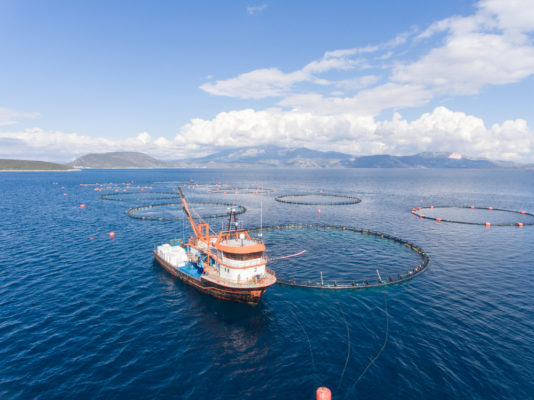What Is Sustainable Fishing?
Seafood has been a staple for humans for thousands of years. The global demand for fishing has increased 122% since 1990, showing that our appetite for fish, calamari, mussels and everything in between shows no signs of slowing.
There are many benefits of eating seafood, but with a growing human population, it’s our ongoing duty to protect marine habitats and threatened species.
By looking after the oceans, we can safeguard the environment and protect the livelihoods of people who depend on fishing as an income.
So how can we do this?
Sustainable fishing is the answer.
Why Is Sustainable Fishing Important?
Sustainable fishing is important for many economic, environmental, and social reasons.
It’s vital in guaranteeing fish populations, preserving ocean and freshwater wildlife and supporting three billion people who depend on the sea for a livelihood.
Maintaining marine ecosystems and leaving enough fish in the ocean requires careful planning and responsible action, but some practices stand in the way of achieving long-term sustainability in the fishing industry.
Overfishing: The Facts
Sustainable fishing relies on the steady population of fish, but overfishing can upset the balance between supply and demand.
If fish are removed from a body of water faster than stocks can be replenished naturally, the species will become underpopulated in that area.
This can lead to a change in the size and health of fish remaining in the water, which isn’t good news for fishermen or fish eaters. Overfishing also impacts local ecosystems, affecting the intricate food web that supports other marine life, including vulnerable species like sea turtles and corals.
If sustainable fishing can’t be achieved, global demand would exceed supply and fish stocks would be depleted to the point where fish wouldn’t be available for consumption.
There are plenty of other implications of overfishing too.
Environmental Impact of Overfishing
From an environmental perspective, sustainable fishing preserves marine habitats. It also protects endangered species from extinction.
However, practices such as bottom-trawling — the use of large nets to pull up as many sea creatures as possible — destroys ocean life and wrecks habitats in the process.
Sustainable fishing uses alternative methods like purse seine fishing, which are far less damaging to the environment and reduce the likelihood of unintentionally catching other marine species.
These sustainable fishing practices help protect the environment instead of harm it.
Economic Impact of Overfishing
The fishing industry in the USA is worth an approximated $.5.5 billion annually and is considered one of the biggest single food-type industries in North America.
Overfishing leads to lower-quality fishing opportunities and fewer profits for the smaller-scale fishermen throughout the year. However, sustainable fisheries no longer permit fishing in waters where a certain quota has already been met.
This helps to protect the environment and the economy, benefiting fish and fish eaters alike.
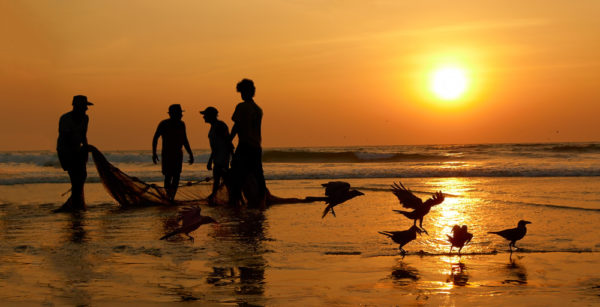
How Sustainable Fishing Benefits the Environment
By prohibiting fishing in certain areas, we can protect coral reefs containing endangered species. On top of this, removing the 460,000 metric tonnes of nets discarded in the oceans every year will reduce the unintentional entrapment of sea creatures in indisposable fishing equipment.
We can also monitor the impact global warming is having on coral reefs, as they are sensitive to a change in temperature.
These methods are all viable, but what can we do to help directly?
Another way to make a change is how we choose our products as consumers.
There are certain certifications and organizations you can look out for when you’re purchasing your seafood that will help you make that sustainable decision.
Global Seafood Alliance
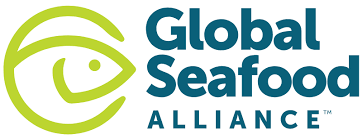
The Global Seafood Alliance is an international organization that seeks to advance sustainable and responsible seafood practices. They aim to do this by collaborating with experts in education, advocacy, and demonstration.
The GSA has a third-party certification program known as Best Aquaculture Practises, ensuring that the fishing industry acts responsibly.
BAP operates in 39 countries and represents 29 different species of seafood. Of that, 236 processing plants are BAP certified. This means that the product has come from a sustainable farm, hatchery, feed mill, and processing plant audited by BAP.
Purchasing a GSA or BAP-certified product from a supplier means you are helping make a positive impact on how seafood is brought to your table.
Global Sustainable Seafood Initiative
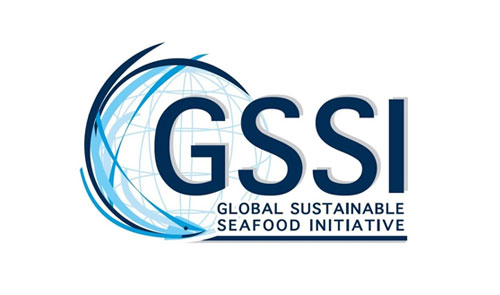
The Global Sustainable Seafood Initiative (GSSI) is a seafood sustainability public-private partnership with over 90 stakeholders in 21 countries. GSSI’s goal is to align global resources and efforts to address concerns surrounding sustainable practices in the seafood industry.
Through its Global Benchmark Tool, the GSSI uses FAO guidelines (Food and Agriculture Organization of the United Nations) to officially recognize seafood certification schemes.
Launched in 2015, the benchmark process has seven stages and is a rigorous and transparent assessment to establish clarity, credibility, and choice in the sale and consumption of seafood.
Seeing the GSSI logo means that you can feel confident that your product has been approved by the FAO Code of Conduct for Responsible Fisheries and FAO Ecolabelling guidelines.
Marine Stewardship Council

The world’s most recognized sustainable seafood logo belongs to the Marine Stewardship Council. An international non-profit organization, you’ve almost certainly seen it before on retail products and in restaurants. The iconic blue label identifies seafood that has been caught sustainably.
The MSC has been working with seafood companies, scientists, and fisheries for over 20 years to safeguard the supply of seafood and protect our oceans.
MSC’s Chain of Custody Standard for supply chain businesses makes sure MSC-certified fish is clearly labeled as such. Businesses such as supermarkets, restaurants, processors, distributors, and warehouses are subjected to annual audits. These inspections are sometimes unannounced — to ensure that the business is adhering to three main requirements:
- Traceability
- Labeling
- Separation
The MSC has been known to commission DNA tests independently on products labeled as MSC-certified to prevent seafood fraud. This confirms that MSC-certified fish hasn’t been substituted for another kind or — even worse — an endangered species. The rate of mislabelling on MSC products is less than 1%, significantly lower than most other seafood labeling.
Aquaculture Stewardship Council
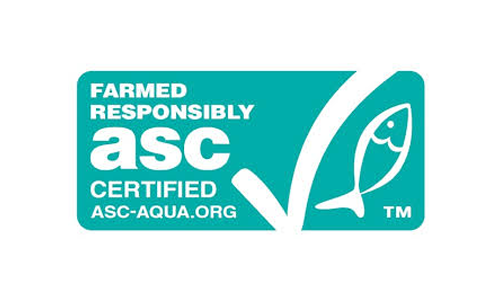
Other leading organizations, such as The Aquaculture Stewardship Council (ASC), are more focused on providing a certification scheme for sustainably farmed seafood (aquaculture).
ASC has very high standards in the fishing industry, including maintaining water quality, sourcing feed responsibly, preventing disease, animal welfare, and the ethical treatment of workers.
Their work is essential for constantly driving up standards in the industry with improver programs for small farms and various research projects.
An ASC certification logo means that you are purchasing a product from a responsible farmer, rewarding their work to comply with ASC’s standards. The ASC works with the environmental and scientific community to keep their programs and standards up to date — subject also to public consultation.
There are other certifications you can look out for, such as the Sustainable Fisheries Partnership and Friend of the Sea logo — both organizations work to implement more responsible policies and practices within the industry.
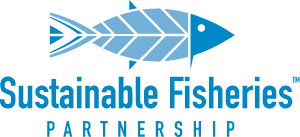
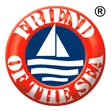
Where Can I Buy Sustainable Fish?
We’ve gone into some of the certifications you can be on the lookout for next time you go to the store, but…
Is there anything more I can do?
Actually, there is.
Research from consumers has shown that the highest consideration for people buying fish is “freshness.”
However, seafood being “fresh” has a commonly misunderstood definition. You might think that “fresh” means caught recently, like in the morning. But in seafood labeling, “fresh” means that the product hasn’t ever been frozen, and it may have taken a week or more to reach the shelf.
A study found that nearly 500 million pounds of seafood goes to waste every year in the United States — that’s nearly half of the annual supply. This is the main drawback of fresh seafood; it is perishable, and if it isn’t eaten gets thrown away.
If you think about it, the seafood available to you might have had to travel a substantial distance to reach you. And if it is fresh, it will usually travel by plane to get there as quickly as possible. With the aviation industry producing around 12% of all the carbon dioxide produce
Frozen Seafood from PanaPesca
![]()
Of course, fresh seafood is delicious and has many health benefits, but most fish we eat is flash frozen quickly after being caught. Freezing the fish immediately locks in nutrients and vital vitamins and also kills harmful bacteria, rendering the seafood safe to eat.
Frozen fish is also transported by boat, rail, or truck, which, compared to air travel, is better for the environment. The benefits of frozen seafood don’t stop there.
After the fish product has been frozen, it can have a storage life of more than a year, reducing wastage.
Sustainable methods are endorsed and regarded highly at PanaPesca when sourcing our fish. Our products are a great way to increase the nutritional value of your diet and help contribute towards more sustainable fishing practices.
As members and supporters of all the aforementioned organizations, we go to great lengths to ensure that our fish and shellfish are from fisheries that carry out sustainable fishing methods.
We are also members of CeDePesca, (Center for Development and Sustainable Fisheries), a non-governmental organization with a mission to work toward ecologically, economically and socially sustainable fishing practices in Latin America. CeDePesca implements Fishery Improvement projects, training stakeholders and building the capacity of small-scale fisheries.
Our commitment to sustainable fishing has an international reach.
We know the quality of our fish is high — that they haven’t been living in contaminated waters and are sustainably sourced.
This ultimately gives us full traceability on our products from catch to table. We even make sure that the plastic trays used to contain our products are easily recyclable, along with the corrugated cardboard boxes we use to ship.
It should be part of your commitment to make a conscious effort to buy frozen seafood from sustainable fishing sources. Maintaining ethical fishing processes can help the planet, support communities, secure the industry’s financial future – and most importantly – ours.
At PanaPesca, we are proud to offer high-quality, sustainably sourced seafood products. Shop now or contact us to learn more about our products today.


